Tamarisk (tamarisk): description and varieties, rules for growing and care
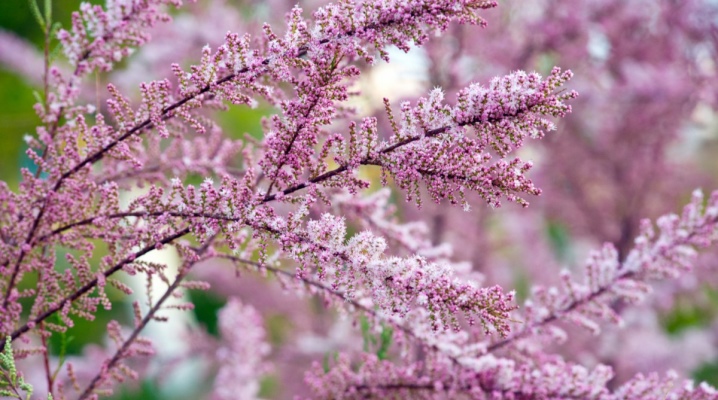
Medicinal and ornamental plants are often considered different classes of crops. However, in reality, these properties overlap more often than you might think. Tamarix is a striking example of such a combination.
Description of the plant
There are few cultures that have so many names. Tamarix is often called:
- comber;
- comb;
- salt cedar;
- the tree of God;
- beads;
- Astrakhan lilac;
- jengil;
- eshel.
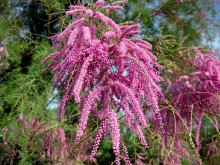
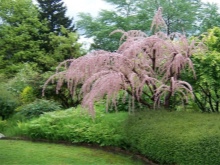
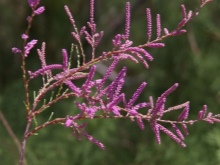
Regardless of the specific name, it denotes heather shrubs, which can be not only evergreen, but also shedding foliage. Sometimes tamariks turn out to be not bushes, but quite full-fledged trees. They are characterized by thin branches. The tamarisk is covered with a reddish-brown bark. As the shrub develops, the bark acquires a blue-violet color.
Its foliage is gray-green in color. When the plant blooms, small pink, white or purple flowers appear. They are grouped in spreading paniculate inflorescences. Of the medicinal properties of tamarisk are noted:
- astringent and diuretic effect;
- anesthesia;
- the ability to stop blood;
- diaphoretic action.
Formally, species of the genus tamarisk are not included in the Russian pharmacopoeia. None of them are used as raw materials for the manufacture of medicines of any kind. The reason is simple - the study of this plant is not great. Therefore, the assurances of a number of sources that tamarix has no contraindications cannot be taken seriously. Using it for self-medication is strongly discouraged.

In total, the genus Tamarix has, according to different classifications, 57-90 species. The length of the leaves can reach 0.7 cm. They are arranged alternately. Tamarisk foliage is distinguished by the fact that salt glands are found on it. Plants of this genus are found:
- on salt marshes;
- on salt licks;
- in desert areas;
- in semi-deserts.
You can see such growth both in the steppe and in the riparian forest. Tamarisk's natural range covers European, Asian and African countries. It is cold-resistant and can survive frosts down to -50 degrees. Salt tolerance is an attractive property of the crop.
It should be borne in mind that in some regions of the world, certain species of tamarisk are recognized as invasive plants dangerous to the local flora.
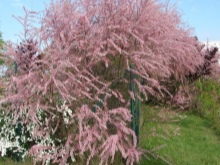
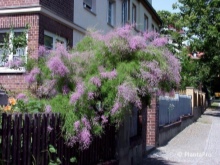

Views
It is appropriate to start browsing the varieties from a graceful tamarixthat forms thin branches. At the time of flowering, the plant is covered with a huge mass of beautiful flowers. Sprawling bushes reach a height of 4 m. They are characterized by thick drooping shoots. A smooth chestnut bark with single light brown inclusions forms on the branches.
The leaves have a lanceolate or subulate structure. They are characterized by a tight fit to the branches. Flowering begins in May. At the same time, racemose inflorescences bloom, the length of which reaches 0.05-0.07 m. Bright pink flowers will delight the owner of the land until the end of the calendar summer.
The branchy species reaches 3-4 m in height. It is characterized by a red-orange color of young branches. Shoots are like twigs. With the beginning of the growing season, they are covered with a thick layer of small green-blue leaves. Before the buds are dissolved, however, the plant looks no less attractive.Its grace is provided by the unblown buds themselves.

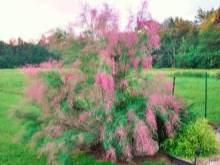

Bloom branched tamarisk falls in June-August and is abundant. The length of the pink-lilac panicles can reach 0.5 m. When the flowering is completed, the fruits of the capsule type are formed. They contain miniature seeds with a hairy crest.
For multi-branched tamarix the presence of thin branches is characteristic. They are painted in a gray or slightly greenish tone. Annual shoots are reddish in color. The leaves are very narrow and very small, not longer than 1.5 cm each; their ends are bent towards the escape. In dense racemes of a complex structure, pink flowers can be grouped. The length of the inflorescences can reach 0.05 m, they live from June to September inclusive.
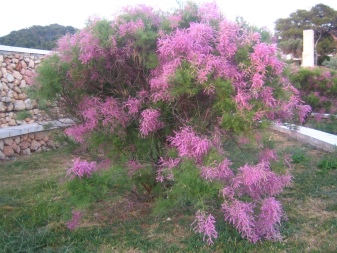
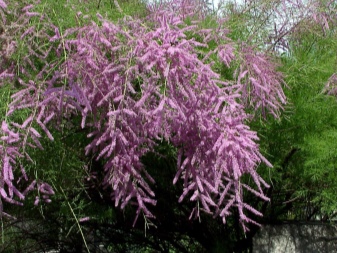
Deserves attention and four-stalked tamarix... In nature, this plant is found in the south of Russia (including the Crimea) and in the Transcaucasian regions. A characteristic feature of the species is a very lush and attractive crown. It is formed by shoots with a reddish bark, shaped like arcs. The lanceolate leaf plates have a juicy green color. The flowering of the shrub begins in the last decade of April.
In this case, white or pink flowers are formed. Each of them has round petals. The culture is suitable for decorating both a city park and a garden plot.
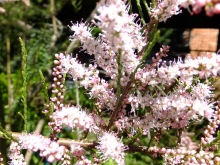

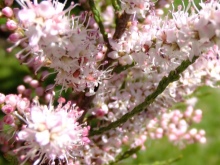
And here small-flowered tamarisk fully justifies its name.
This is a low (up to 3 m maximum) shrub with medium-sized pink buds. It will bloom in May and June. For a plant, areas flooded with bright sun are attractive. The drought resistance of the small-flowered tamarisk is quite high. However, in very dry periods it will have to be watered.
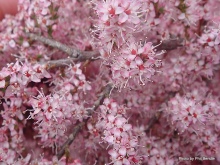
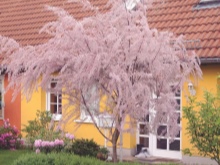
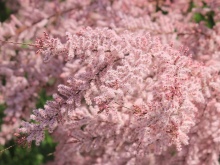
Young specimens grow very intensively. Growth slows down later. Popular and Meyer's tamarisk. In nature, it populates:
- east of Transcaucasia;
- north of Iran;
- western regions of Central Asia;
- Astrakhan region;
- Kalmykia;
- Dagestan;
- Stavropol region;
- Rostov region (but there the species is listed in the regional Red Book).
Plant height can reach 3-4 m. Reddish bark formation is characteristic. The leaves have a dull, scaly shape and are slightly curved. On the branches of the last year, lateral inflorescences are formed. Propagation by seeds is usually provided; planting material quickly loses its germination.
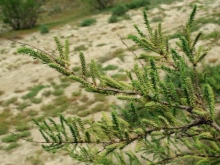
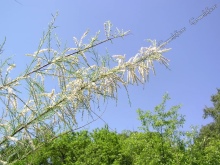
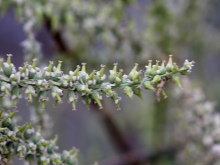
Popular varieties
Among the branched species of tamarisk, there are 3 main varieties:
- Rubra (differs in graceful red-violet flowers);
- branchy "Pink cascade" (decorated with light pink flowers);
- Summer glow (high density raspberry inflorescences are characteristic).
Loose tamarisk is found in the northwest of the PRC and in Mongolia; it can also be found in northern Iran. An alternative name is pink tamarisk. The variety cannot be higher than 5 m; the branches are characterized by a gray or green color. In the upper panicles, racemose inflorescences are noticeable. The flowering period is approximately 2 months. The winter hardiness of plants varies greatly depending on the variety and species.
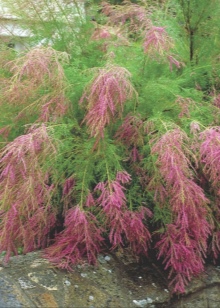
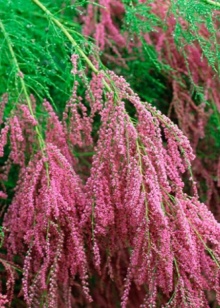
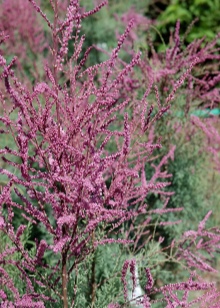
Growing rules
Seat selection
Planting a tamarisk in the garden will work regardless of the chemical composition of the soil and its mechanical structure. But still it is advised to give preference to soils with a neutral or alkaline pH value. An abundance of sunlight is very important for this culture. If such a condition is provided, you can count on the full flowering of the plant, even on dense clay. Problems that often force us to abandon the planting of other crops are not significant for tamarix; it is only necessary to take into account the winter hardiness of a particular variety.
Regardless of the region, it is better to plant the plant on the southern border of the site. For shelter from the wind, the walls of houses and outbuildings are suitable. Sometimes even an ordinary shrub is enough for this.
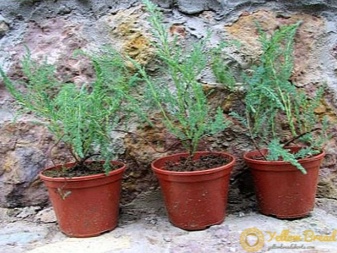
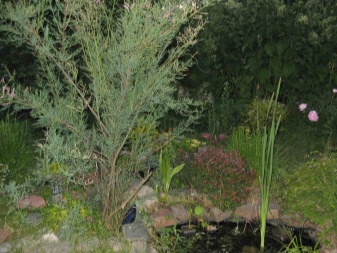
Timing
Sometimes you can find a mention that tamarisk can be planted even after the end of the leaf fall. But it must be borne in mind that this plant is of southern origin, and can suffer greatly from low temperatures. Normal adaptation in the open field, it successfully passes only with spring planting. With the onset of the growing season, you need to wait for the moment when the air will steadily warm up above zero degrees around the clock.
In the Moscow region, as in other regions of our country, tamarisk can theoretically be planted both in spring and autumn. But still, this is a rather cold area, and therefore the spring planting period is preferable in it. In the Urals and Siberia, it is strongly advised to grow tamarix, first in the form of seedlings.
Direct transplanting it into the soil is impractical. Sowing seeds for seedlings is done at the end of winter or in the first days of spring.

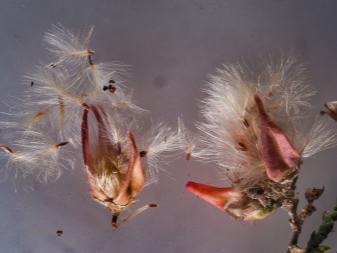
Seedling soil and planting material should be purchased only in specialized stores. In ordinary city markets, low-quality goods of this kind are often sold. The seedlings will need to be grown within 2 years. Only in the 3rd year does the time come to transplant them into open ground.
Soil preparation
Abundant flowering of the culture will be possible only with certain efforts on the part of flower growers. A solid drainage layer is created on the selected site. For a plant that naturally populates deserts and sandstones, moisture stagnation is extremely destructive. Excessive acidity of the soil can be suppressed by liming.
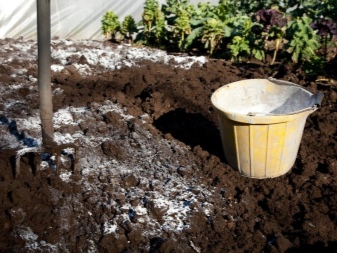
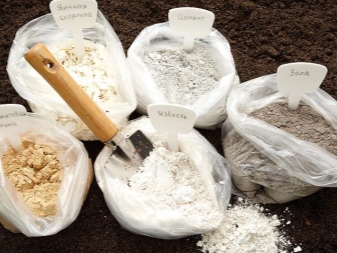
To improve the soil containing a lot of clay, you will need to plant tamarisk at the same time with the addition of humus or compost. This will bring the structure of the earth closer to the ideal. The denser the earth, the worse it will allow water to pass through. Therefore, you will have to dig a deeper planting hole, simultaneously building up the drainage layer.
It is undesirable to use high-moor peat to dilute dense soil, since then the earth will acidify strongly.
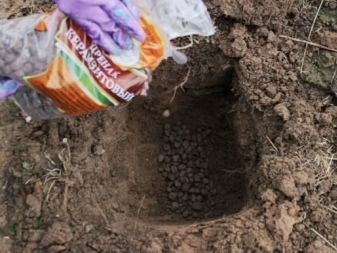
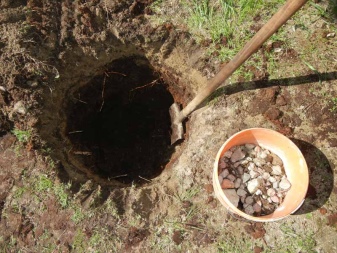
Landing scheme
As already mentioned, you must first dig a hole in which a sufficient amount of drainage will be located. On top of it, spread soil with the addition of humus or compost. A mound is formed from this soil, which will serve as a support for the seedling. The roots are carefully spread so that they look to the sides. The height is selected so that the root collar is outside.
The pit is filled up and the earth is slightly crushed right in the process. After the end of the backfill, the entire soil is compacted. Too strong ramming is discouraged. Between the planting pits, 1 to 1.5 m of free space is left.
The width of the ditch should be at least twice the width of the plant with a lump of soil.
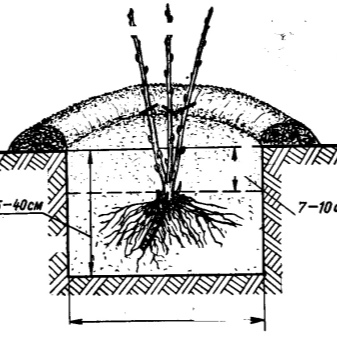
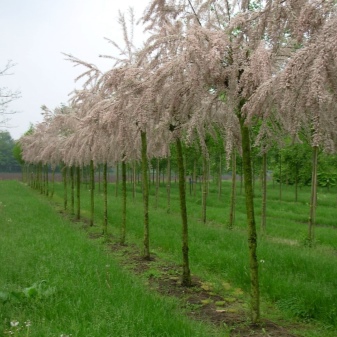
Care
Watering
If the soil was damp during planting, it will be correct to refrain from watering in the first hours and days. But in the next 10-15 days it is necessary to control so that the earth in the near-trunk circle does not dry out. This area is covered with mulch, and the shoots are shortened a little. Cuttings should be cut by 0.02-0.03 m. In the future, regular watering of the beads will not be needed.
The fact is that it has very deep roots. They themselves will provide the plant with the necessary amount of moisture. It will flow steadily even on the hottest day. Therefore, gardeners are completely freed from the need to water tamarix in the summer.
Only in very hot and dry weather, 10-20 liters of water is periodically poured onto an adult plant; 3-5 liters of liquid are enough for young seedlings.
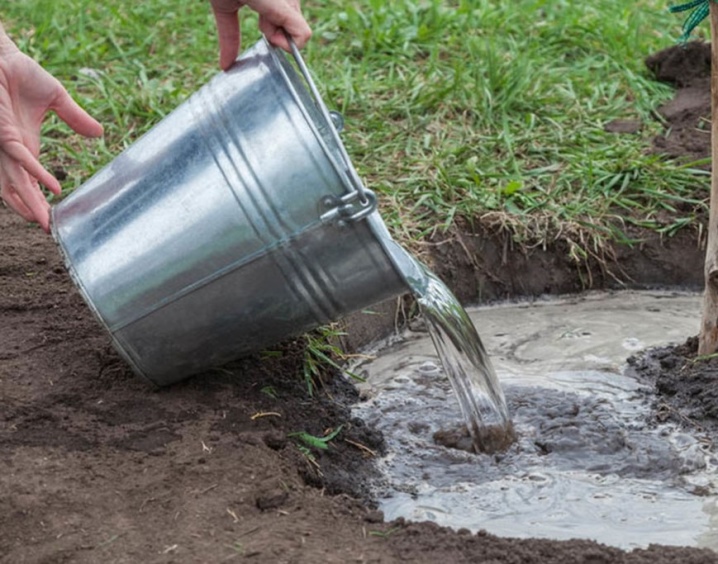
Top dressing
Tamarisk in nature inhabits very poor lands. Therefore, you will not have to systematically give him fertilizers. The very first feeding is carried out the next year after planting, in the spring. At this point, humus and compost are used for mulching. Such feeding is enough until the beginning of flowering.
When the tamarix is covered with buds, half of the usual portion of fertilizer is applied to the soil. A mixture of phosphorus and potassium is used for such feeding. It is on them that the usefulness of supporting a flowering bush depends.As winter approaches, the trunk circle is covered with compost and humus mulch.
In addition to supplying the plant with nutrients, such a layer will help prevent roots from freezing.
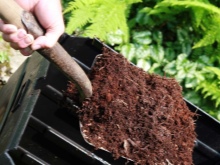
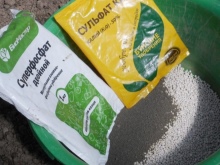
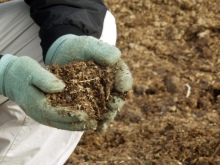
Pruning
The main role of this procedure is to fully form the bush. Unlike watering and feeding, pruning for tamarix is vital. They can survive a haircut perfectly. Therefore, gardeners should take up the pruner without the slightest hesitation. When the plant is bare (leaf fall ends), all diseased and broken shoots must be cut off from it.
Of course, you will have to clean up all the dry, dead growth. Formative pruning is designed to shorten the shoots that extend beyond the main contour. The crown of the shrub is carefully leveled. It is imperative to thin out excessively dense clusters of branches, otherwise they will damage each other and suffer from infections provoked by a lack of air. When winter is over, it is required to remove shoots that have not survived the effects of cold weather, snow and icing.

Reproduction
Seeds
The main problem that often interferes with the propagation of tamarix by seed is the very short germination time. For 3-4 months they lose the ability to sprout. The situation is even worse where the conditions for the development of the "desert guest" are not good. Of course, planting seeds in the fall would be a bad idea at all. The preparation of seedlings is as follows:
- wet soil is placed in containers with lids or a glass layer;
- fresh planting material is laid out on this soil;
- the seeds are pressed down a little, but make sure that they are not closed from the light;
- control soil moisture and maintain it at an acceptable level;
- after the emergence of shoots, the shelter is removed and the container is removed from the pallet with water;
- keep seedlings on the windowsill, waiting for a stable warm time;
- planting tamarisk in the growing garden;
- at the age of 1 or 2 years, the tree is transplanted to a permanent site.
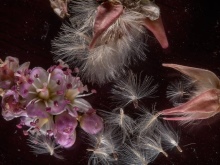
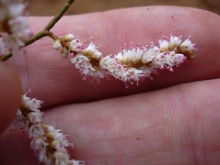
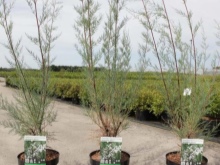
Cuttings
Tamarix seeds are mainly used by breeders. They thus develop new varieties and improve the characteristics of the crop. It is much easier to root the plant with cuttings for everyday purposes. It is recommended to use cuttings of winter (January) slicing. At the beginning of the year, the bush is dormant and will calmly survive the procedure.
Sometimes layering is also used. It is necessary to select candidates for them when examining overwintered tamarix. The best option is the lower lignified branch. You must try to bend it and attach it to the ground, and then sprinkle it a little with soil. The land at the place where it is planned to root the cuttings is systematically moistened; under such conditions, success can be achieved by the end of the summer.

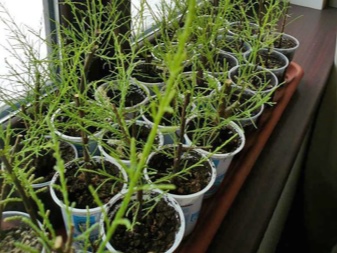
Diseases and pests
Causes
Tamarix almost never gets sick. Pests, too, with rare exceptions, crawl around or fly around it. Only occasionally do they move to desert bushes from other plants. Therefore, the main cause of tamarisk diseases is consistently neglect of the gardener. Or ignoring the basic requirements for planting and leaving.
Of the ailments for tamarix, fungal diseases are especially dangerous. As in other crops, they appear primarily against the background of damp, chilly weather. Nothing can be done about this (other than special treatment). But it is quite possible to initially plant the plant in the most dry and warming place. The plantings are recommended to be examined systematically in order to detect the appearance of problems in a timely manner.
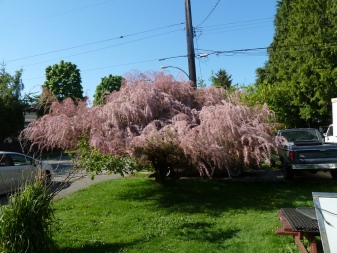
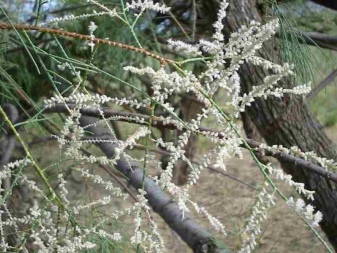
Symptoms
Sometimes for inexperienced gardeners, tamarisk is perplexing. If it hibernates in a bent state, and hibernates quite well, the top can still die off. In this case, development will begin anew, from the root. Such behavior of the bush (annual recovery from the non-freezing level) is completely natural for it.
Subject to the conditions of maintenance, the bush does not even turn yellow almost never, and painful symptoms may be associated only with excessive overcrowding of plantings.
Treatment
When affected by fungal ailments, the first condition for success is to limit watering. All damaged parts covered with gray spots are burned. You cannot use them in any other way. The tool is thoroughly disinfected before and after work. For all fungi and harmful insects, specialized preparations must be used.
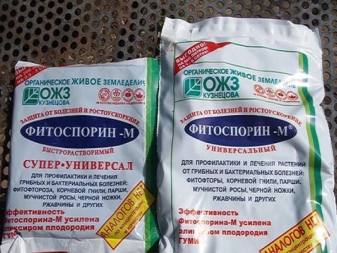

Prophylaxis
The most important preventive measure is to avoid the reasons why tamarisk can get sick. It is planted in a timely manner if excessive plant density is found. They strictly comply with the requirements of agricultural technology. Diligently limit watering and keep the drainage layer in good condition.
The usual regulations for the frequency and quantity of fertilizers must not be violated.
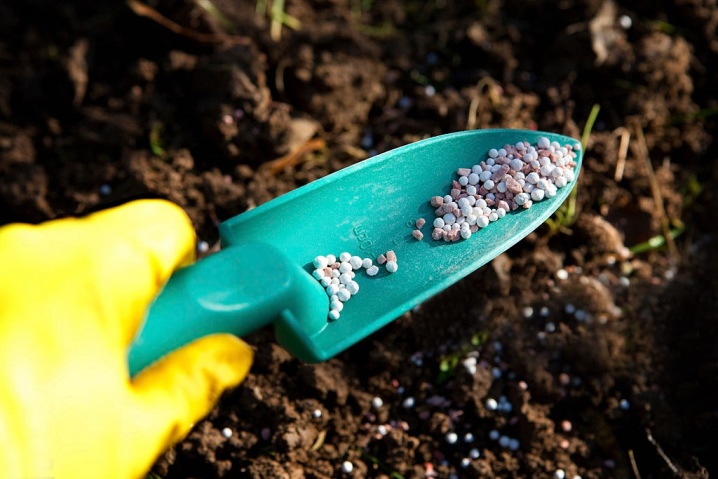
Application in landscape design
Tamarix gives a good result only when using a clear landing pattern. This plant is widely used in original landscapes. Thanks to its impressive beauty, both solitary planting and mixed planting can be done. Tamarisk grows well and on gradually crumbling slopes. Besides the external decoration, it will stabilize them.
Grebenshik looks attractive in the alpine slide. Stunted bushes of other species will become its excellent neighbors. An alternative solution is to plant the bushes separately, combined with the decoration of the surrounding space with decorative details.
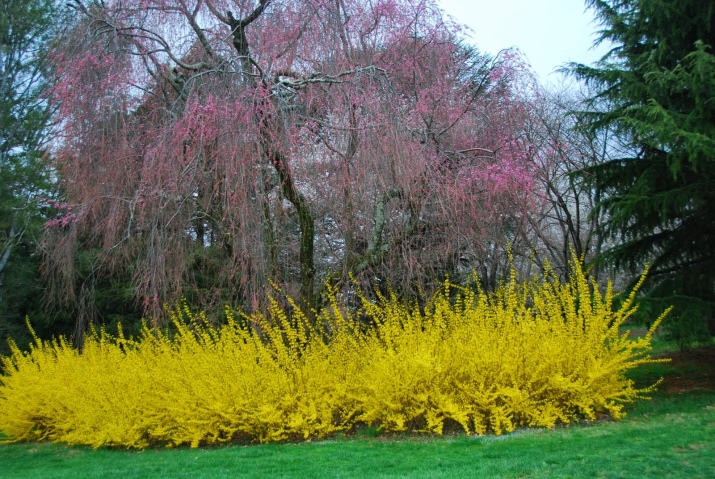
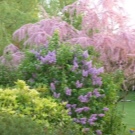
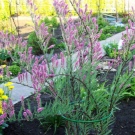
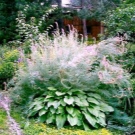
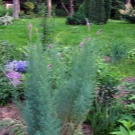
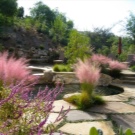
The moderately tall tamarisk leaves an attractive blend with lavender. But tall pieces are better suited for Japanese, minimalist and other strict styles.
For the features of tamarix, see below.



































































The comment was sent successfully.